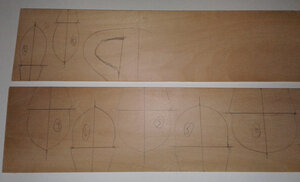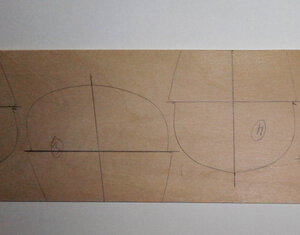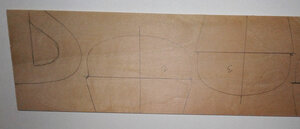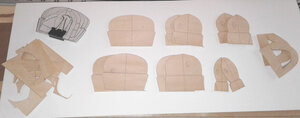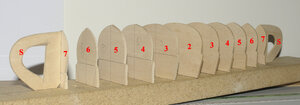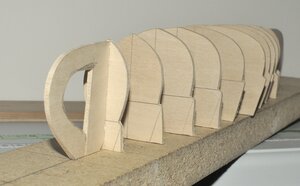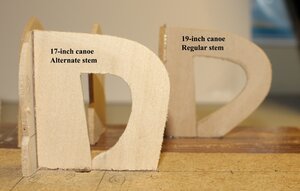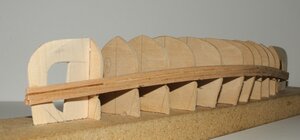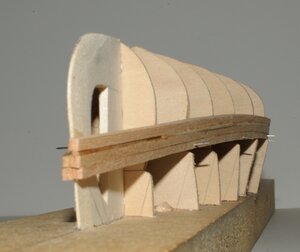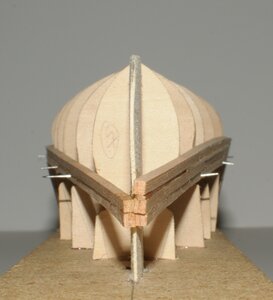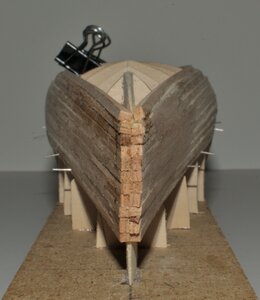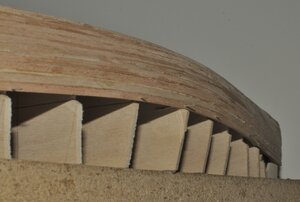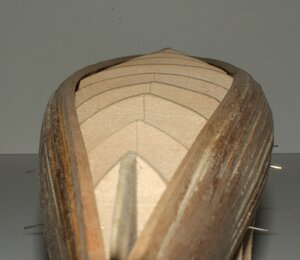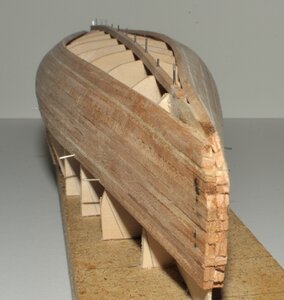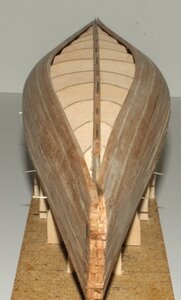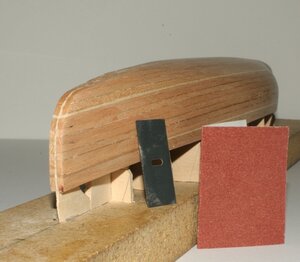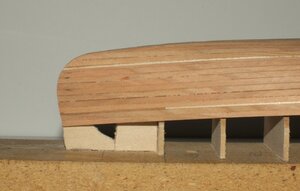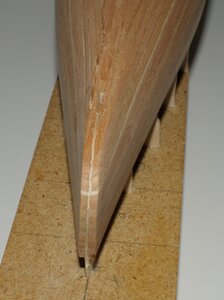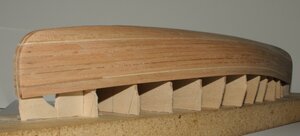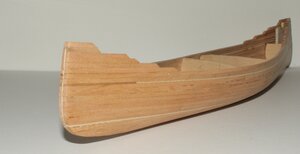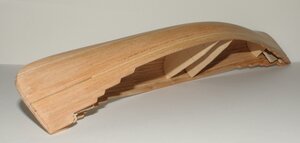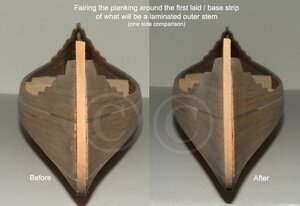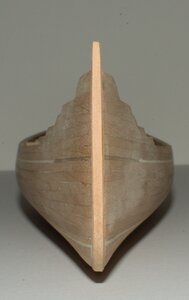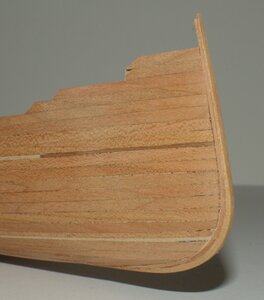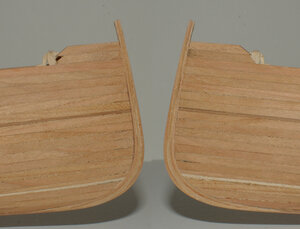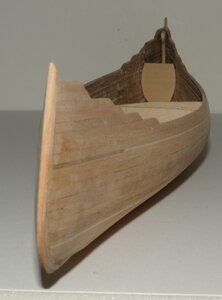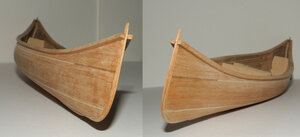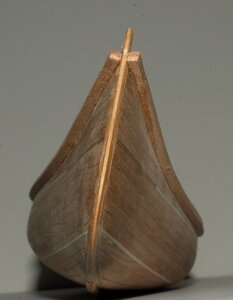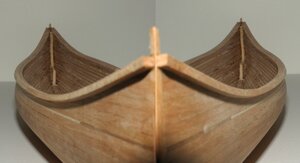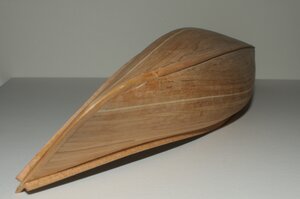So sanding the inside ...
As for every model where the inside needs to be sanded, this step can be long and boring. It really depends a lot on what the modeler wants to achieve, how far one may want to take it, what will be covered by other parts, etc....
In the ends, does the modeler want to work to get the inside of the hull surface as smooth and even as the outside.
In this case, because ribs, flooring and a couple other battens will be installed, I usually do not push sanding to obtain a surface that equals the smoothness of the outside planking. Through this process, I will get rid of all the hard edges so that I can achieve good contact between the ribs and the planking.
no sanding applied yet: heck, the station molds have not yet been removed:
Some sharp edges, some glue oozed out between strips ....
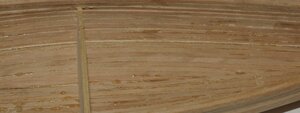
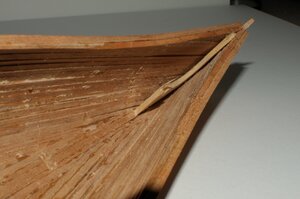
Because sanding is so boring, it is never done fast enough. As a result, I brake it down into 3 or 4 sessions of +- 20 minutes each: applying vigorous sanding at first using 80 or 100 grit paper (first 2 sessions), to eliminate sharp edges. Then the next 2 sessions are spent working with 150 grit paper.
After the first 2 sessions... It is already a little better... so 2 more sessions to go....
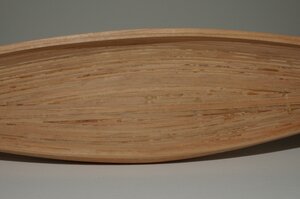
Should the canoe be built without ribs and floor, which is often seen as the traditional canoe look, then sanding is applied to a really smooth surface. How hard is it? Well, it really depends on how careful the modeler was when planking the hull in the first place: hard edges, glue , some gaps between the planks, etc....
While sanding the inside, I also work on further reducing the thickness of the sheer strip / plank. The final size should be a little less than 1/16 of an inch.
The top of the photo below shows the width of the gunwale (3/32" +) and the thickness of the sheer plank, which is a little less than 1/16th of an inch.
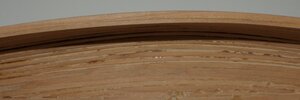
Of course all sanding is done by hand. The inside ends of the canoe will not be sanded as much as the rest as it gets very tight in there: the area will be covered by the deck anyways...
Next step .... the ribs.
G.



